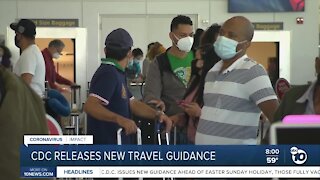The Efficiency of the Mode of Travel (Part 2).
The aim of this 5 part series is to disseminate the concepts of urban transport planning. The need for such a series was felt after confusion reigned on social media during the great many debates that the road widening projects carried out by Infrastructure Malta ignited.
Contents
0:00 Most efficient mode in space
0:32 Most cost effective mode
1:27 Factors of mode choice
2:08 Less travel time preferable to cheaper prices
References
Mees, P. (2010) Transport for suburbia. Beyond the automobile age. London: Earthscan.
Nielsen, G., Nelson, J. D., Mulley, C., Tegnér, G., Lind, G. and Lange, T. (2005)
HiTrans best practice guide no. 2. Public Transport – Planning the Networks. Unknown place of publication: Unknown publisher. [online] [Accessed on 7th November 2016].
http://www.civitas.no/assets/hitrans2publictransportplanningthe-networks.pdf
Downs / Thompson Paradox
Mogridge, M. J. H. (1997) ‘The self-defeating nature of urban road capacity policy. A review of theories, disputes and available evidence.’ Transport Policy. 4(1) pp. 5 – 23.
Importance of travel time and travel time reliability
Lei, T. L. and Church, R. L. (2010) ‘Mapping transit-based access: integrating GIS, routes and schedules.’ International Journal of Geographical Information Science. 24(2) pp. 283 – 304.
Vandenbulcke, G., Steenberghen, T. and Thomas, I. (2009) ‘Mapping Accessibility in Belgium: a tool for land-use and transport planning?’ Journal of Transport Geography. 17 pp. 39 – 53.
Practical Factors
Murray, A. T., Davis, R., Stimson, R. J. and Ferreira, L. (1998) ‘Public transportation access.’ Transport Research D. 3(5) pp. 319 – 328.
Psychological Factors
Cullinane, S. (2002) ‘The relationship between car ownership and public transportprovision: A case study of Hong Kong.’ Transport Policy. 9 pp. 29 – 39.
Cullianen, S. and Cullinane, K. (2003) ‘Car dependence in a public transport dominated city: Evidence from Hong Kong.’ Transport Research Part D. 8 pp. 129 – 138.
Anable, J. (2005) ‘’Complacent Car Addicts’ or ‘Aspiring Environmentalists’? Identifying travel behaviour segments using attitude theory.’ Transport Policy.12 pp. 65 – 78.
Lämmer, S., Gehlsen, B. and Helbing, B. (2006) ‘Scaling laws in the spatial structure of urban road networks.’ Physica A. 363 pp. 89 – 95.
Beirão, G. and Cabral, J. A. S. (2007) ‘Understanding attitudes towards public transport and private car: A qualitative study.’ Transport Policy. 14 pp. 478 –489.
Pictures
https://www.businessinsider.com/us-cities-with-most-traffic-2019-2019-2#5-los-angeles-ca-11
http://blog.cellbikes.com.au/2012/09/australia-re-creates-world-famoustransport-photo/
https://www.publictransport.com.mt/en/news-details/6-million-euro-investment-in-new-buses-for-malta
https://auto.ndtv.com/news/bugatti-centodieci-unveiled-at-pebble-beach-car-show-2019-2086461
https://www.freepik.com/free-vector/illustration-weighing-scale_2945055.htm#page=1&query=weighing%20scale&position=0
-
 30:58
30:58
This is how we roll
3 years ago $0.01 earnedJapan Car Culture Travel Vlog (Part 2)
18 -
 30:20
30:20
This is how we roll
3 years agoJapan Car Culture Travel Vlog (Part 3)
391 -
 34:21
34:21
This is how we roll
3 years ago $0.01 earnedJapan Car Culture Travel Vlog (Part 1)
32 -
 0:15
0:15
nature sounds
3 years agoTravel Life
42 -
 4:28
4:28
WXYZ
3 years agoSpring Break Travel
42 -
 8:25
8:25
redkentuckyman
3 years agoWinter Travel
31 -
 0:12
0:12
Hamadavlog21
3 years agoTop travel
411 -
 0:30
0:30
KGTV
3 years agoNew travel guidance
48 -
 0:19
0:19
Kavana92
3 years agoTravel freak 3
67 -
 2:31
2:31
KMGH
3 years agoAAA Travel - Increased Bookings
6